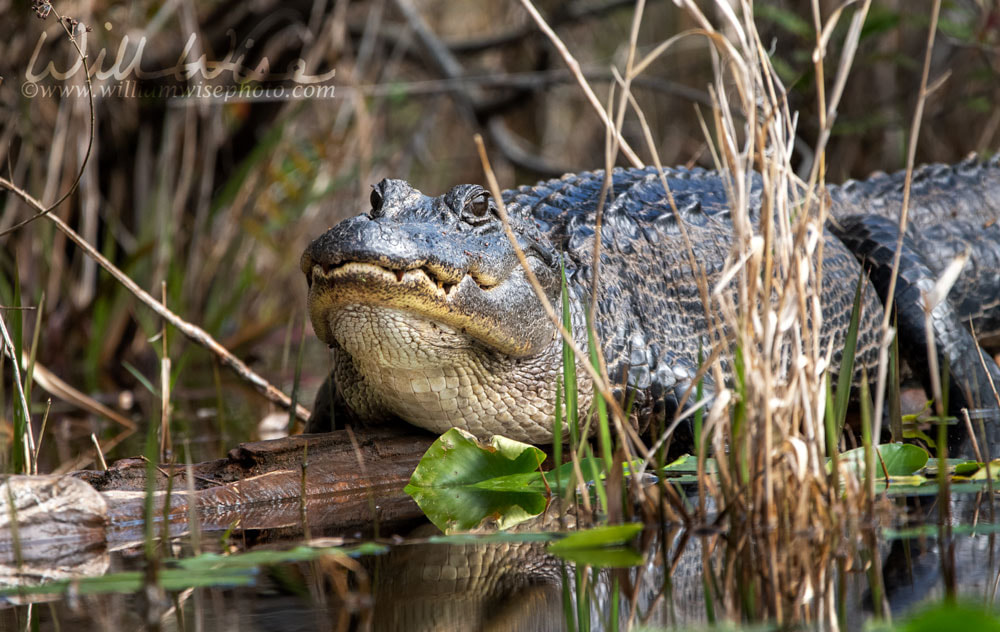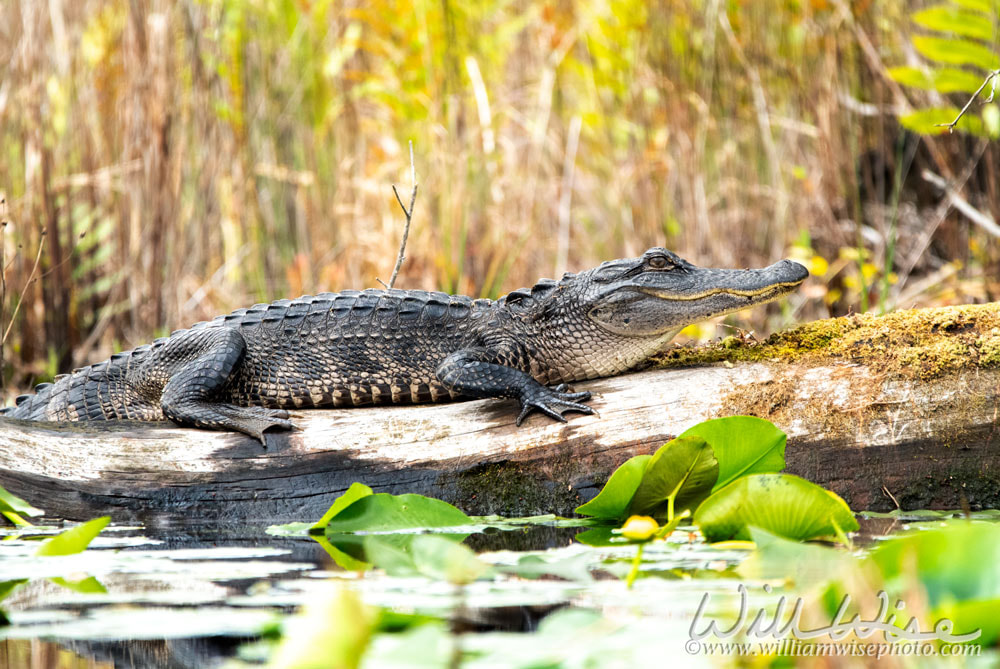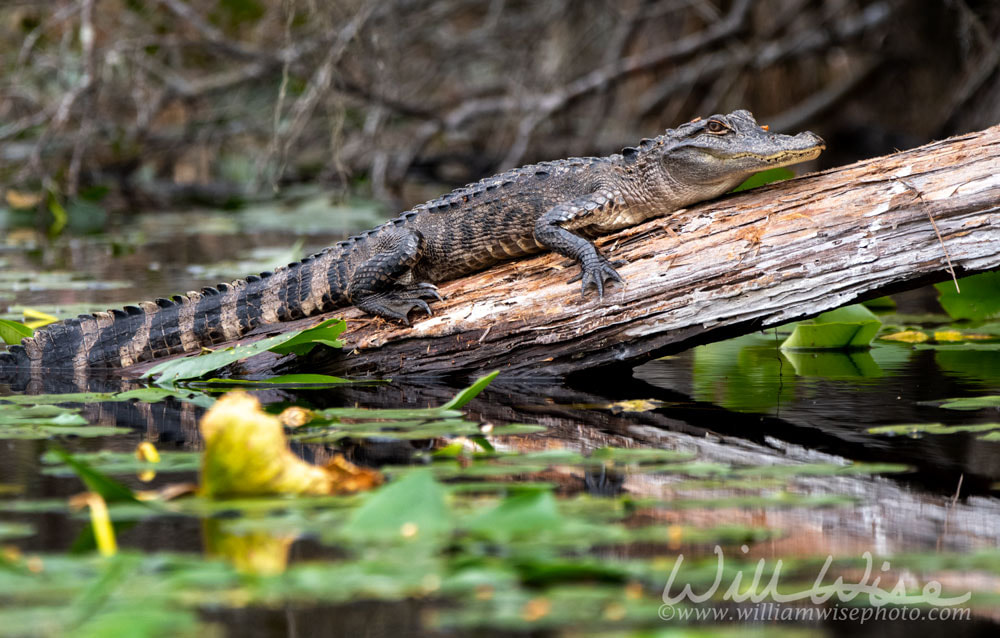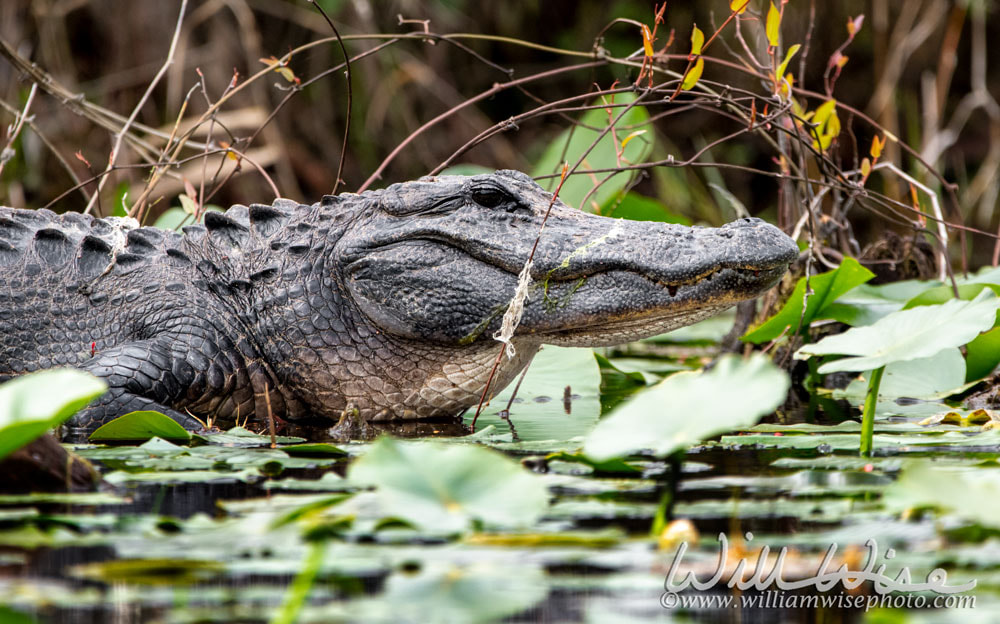 Okefenokee Photography by William Wise. A nature photo journal exploration of Georgia's Okefenokee Swamp, the Land of Trembling Earth, one of the largest blackwater swamps in North America. The alligators, birds, snakes and wildlife of Okefenokee National Wildlife Refuge and Stephen C Foster State Park. -- "What a wildly wonderful world, God! You made it all, with Wisdom at Your side, made earth overflow with your wonderful creations." Psalms 104 The Message “I have always understood,” said Bilbo the Hobbit in a frightened squeak, “that dragons were softer underneath…” The dragon Smaug stopped short in his boasting. “Your information is antiquated,” he snapped. “I am armoured above and below with iron scales and hard gems. No blade can pierce me… My armour is like tenfold shields, my teeth are swords, my claws spears, the shock of my tail a thunderbolt…!” 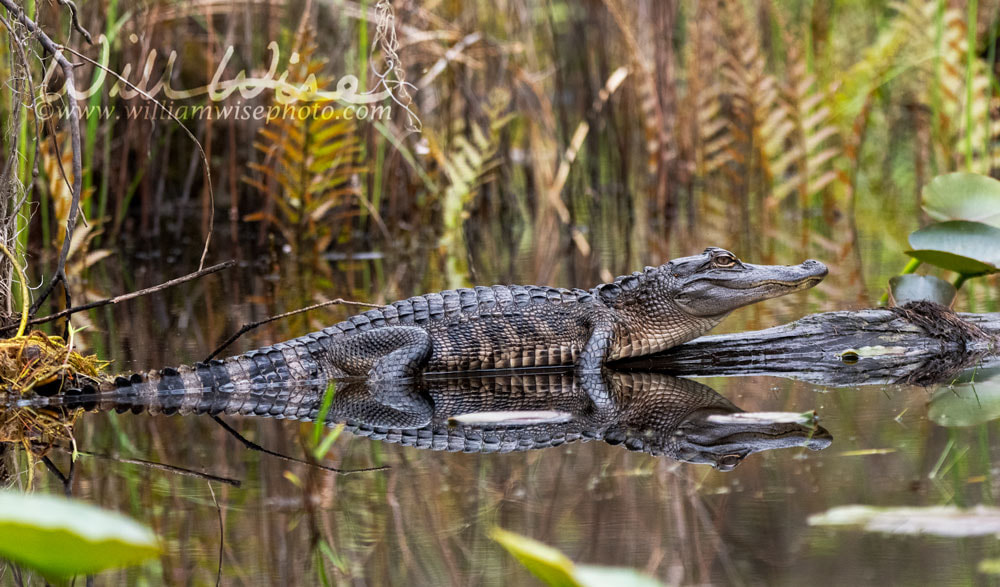 An alligator’s body is covered by a dermal exoskeleton of massive, thick, tough scales and scutes which protect it like armor. Some are touch sensitive integumentary sensory organs for sensing and locating prey in dark blackwater swamps. Okefenokee Swamp National Wildlife Refuge, Georgia. March 10, 2020. Truly, the American Alligator is a living dragon. In an entry aptly titled, Crocodilian Armor, Wikipedia states, “The epidermal exoskeleton of the alligator consists of oblong horny scales, arranged in transverse rows. The dermal exoskeleton consists of bony scutes.” Massive scutes along its back, and smaller scales along its sides, arms and hips. A close-up look reveals a mesmerizing puzzle-like pattern without gap or chink; all laid in order, above and below… an impressively armored creature! Its armor is not just as a shield during battles with his own kind, nor just for protection from the hardness of the swamp environment, but to prevent water loss and dehydration in his sultry tropical climate. Although the armor appears thick and tough, parts of an alligator’s body are quite sensitive – even more than a human fingertip. An asknature.org article says, "The touch-sensitive organs are called integumentary sensory organs. Thousands of these sensory organs cover the alligator’s face. They are especially dense around the teeth, inside the mouth, and at the tip of the snout. Researchers hypothesize that these extremely touch-sensitive areas around the mouth help the alligator locate, capture, and examine prey even when visual and sound cues are absent."
0 Comments
Your comment will be posted after it is approved.
Leave a Reply. |
Categories
All
Archives
June 2025
|
|
All content is ©williamwisephoto.com. Please don't steal images. My images are available at dreamstime.com. Stock sales go into the shelter photography program.
|
In December 1993 I came to know the Designer and Creator of this wonderful planet and its creatures: Jesus Christ.
|
Donations help support the animal shelter adoption photography equipment and adoption website hosting and domain fees. Thanks for your support!
|
